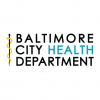Panel Touts Success Integrating Primary Care, Population Health (AAFP)
Monday Oct 23rd, 2017
By identifying specific public health problems and offering care to people the moment they need it, population health initiatives can work with primary care to improve health outcomes before patients go to their physician's office or the ER.
Public health officials discussed successful primary care-population health integration at the city and state levels during a panel discussion at the Patient-Centered Primary Care Collaborative Fall Conference(pcpccevents.com) held here Oct. 11-12.
Baltimore has launched several such efforts. In one example, city health officials decided to tackle one of the nation's highest infant mortality rates and several other health disparities that occur among low-income and ethnic minority groups. The need was great, because social determinants of health contribute to a 20-year variation in life expectancy among residents of different Baltimore neighborhoods.
Evan Behrle, a special adviser for opioid policy with the Baltimore City Health Department, described a program that seeks to reduce the infant mortality rate by 40 percent within eight years. B'more for Healthy Babies(www.healthybabiesbaltimore.com) places pregnant women enrolled in Medicaid into a triage system of team-based care focused on reducing premature birth, low birth weight and unsafe sleep. Nurses make visits in targeted neighborhoods using a map that highlights specific corridors of need.
